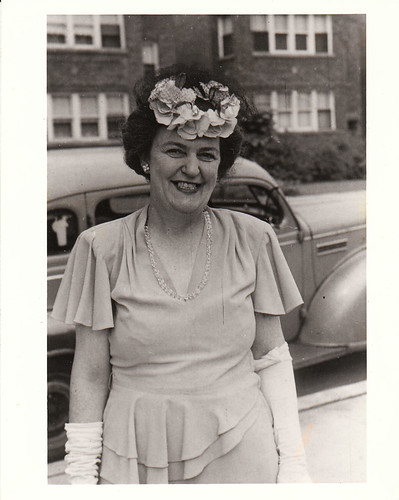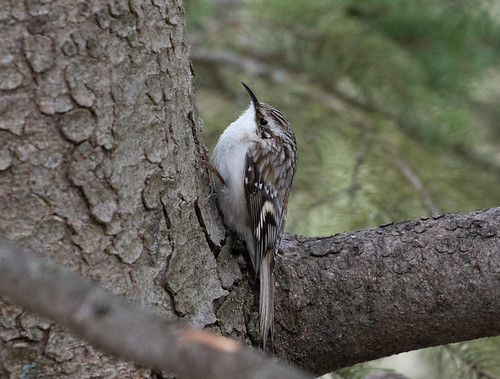In 1957, the year before Rachel Carson started writing Silent Spring, her niece died, and Carson adopted her 5-year-old grandnephew Roger. She’d already had many lovely experiences with him along the Maine coast; she’d written an article for the July 1956 issue of Women’s Home Companion magazine about them, titled “Help Your Child to Wonder.” (You can read the magazine article here.) She planned this to be the start of a book to inspire parents to help their children experience the “lasting pleasures of contact with the natural world…available to anyone who will place himself under the influence of earth, sea, and sky and their amazing life.” Her book, The Sense of Wonder, which was mostly this magazine essay filled in with photos, was published posthumously.
Older adults are very important in a child’s life, and almost certainly contribute to the values children develop, perhaps most notably around nature. I know many birders who got their start by looking at wild birds with a grandparent. My own very earliest memories are of my grandmother , who died when I was just a couple months older than my 13-month-old grandson Walter is now, so I was just a toddler. But I vividly remember her smiling at me. One day back in the early 90s, a relative I didn’t know who lived on the East Coast, out of the blue, mailed me a photo of her. The moment I saw it, before I even read the letter, I started crying, so clearly remembering her eyes and smile. I’d never seen that photo before.
Indeed, at that time I’d never seen any photo of my grandmother at all except one wedding picture taken decades before I knew her, but her face was apparently firmly embedded in my memory.
Even though I never went birding with her, she’s also tied in with my earliest memories of birds. She was named Laura, and everyone told me how much she loved birds. She had pet canaries that I loved dearly, and after she died, my Grandpa always kept canaries in her memory. He told me a lot of stories about birds, from Passenger Pigeons to the canaries that died saving miners’ lives, and gave me my first bird book, Bird Stamps: A Little Golden Activity Book. I’m sure all this reinforced my deep love for birds.
My own little grandson is not quite talking yet, though Russ insists that two times on Friday, when Walter was looking out the window toward the bird feeder, he said something that sounded for all the world like “chickadee.” That would of course gratify me no end—my daughter Katie’s second word was “boo jay.” Walter saw Blue Jays quite a bit in the window feeder in my office while he was living with us, but they moved to another neighborhood of Duluth now, and Blue Jays don’t come to the hanging feeder out the living room window there. But Walter has seen chickadees just about every day of his life since he came home from the hospital and I held him up to the window. And ever since he was three or four months old, he’s been waving his arms and smiling whenever they show up. One of our games is to spend 10 or 15 minutes watching my laptop’s screensaver randomly showing pictures from a folder of my favorite photos. He gets most excited when a picture of him, his mom or dad, his Grandpa, his dog Muxy, or my dog Pip appears, but he seems fascinated, focusing on all the pictures as I tell him the names of the birds from around the world, and gets very excited when a chickadee or Blue Jay pops up. When a photo of a squirrel or rabbit appears, he wrinkles his nose and makes an adorable sniffing sound.
Walter’s first toy, and still one of his most treasured, is a Beanie Baby from the 90s that we call Dr. Blue Jay. Dr. Blue Jay takes naps with Walter, rides in his wagon with him, and watches birds out the window with him. When Walter is sad, it doesn’t take much more than Dr. Blue Jay flying in to cheer him right up.
Walter’s yard has lots of birds, but only chickadees and once in a while a goldfinch approach the hanging window feeder, so now that I’m babysitting at his house rather than ours, I can’t show him many real birds close up. But last week, when we were feeling the textures of different kinds of tree trunks in his yard, a Brown Creeper appeared barely 4 feet away, hitching its way up a maple. The movement caught both our eyes at the same time, and as I was telling Walter it was a Brown Creeper, he started making delighted squeals and waving his arms. I’d have thought that would scare away the tiny bird, but the creeper stayed just as close. When it reached a thick limb above us, it flew not to another tree but to the base of the same one, so we got a repeat view. I was transfixed as much by the look of delight on Walter’s face as by the magical little bird.
I’ll be 70 next month. I’ve already lived 13 years longer than Rachel Carson, and 8 years longer than my grandmother, so although I plan to stick around this lovely planet as long as possible, and got my Pfizer booster shot last week as a wee bit of insurance, I have no illusions about the finite nature of my life. I’m so grateful that I’ve been allowed to stick around this long, and to be having such wondrous experiences with Walter. I want him to develop his own passions in life based on who he is, not who I am, and sure hope I can enjoy his whole childhood and even some of his adulthood. But my dearest hope of all is that throughout his life, he’ll keep a place in his heart for birds and all of nature, a place warmed by memories of his Grandma.




